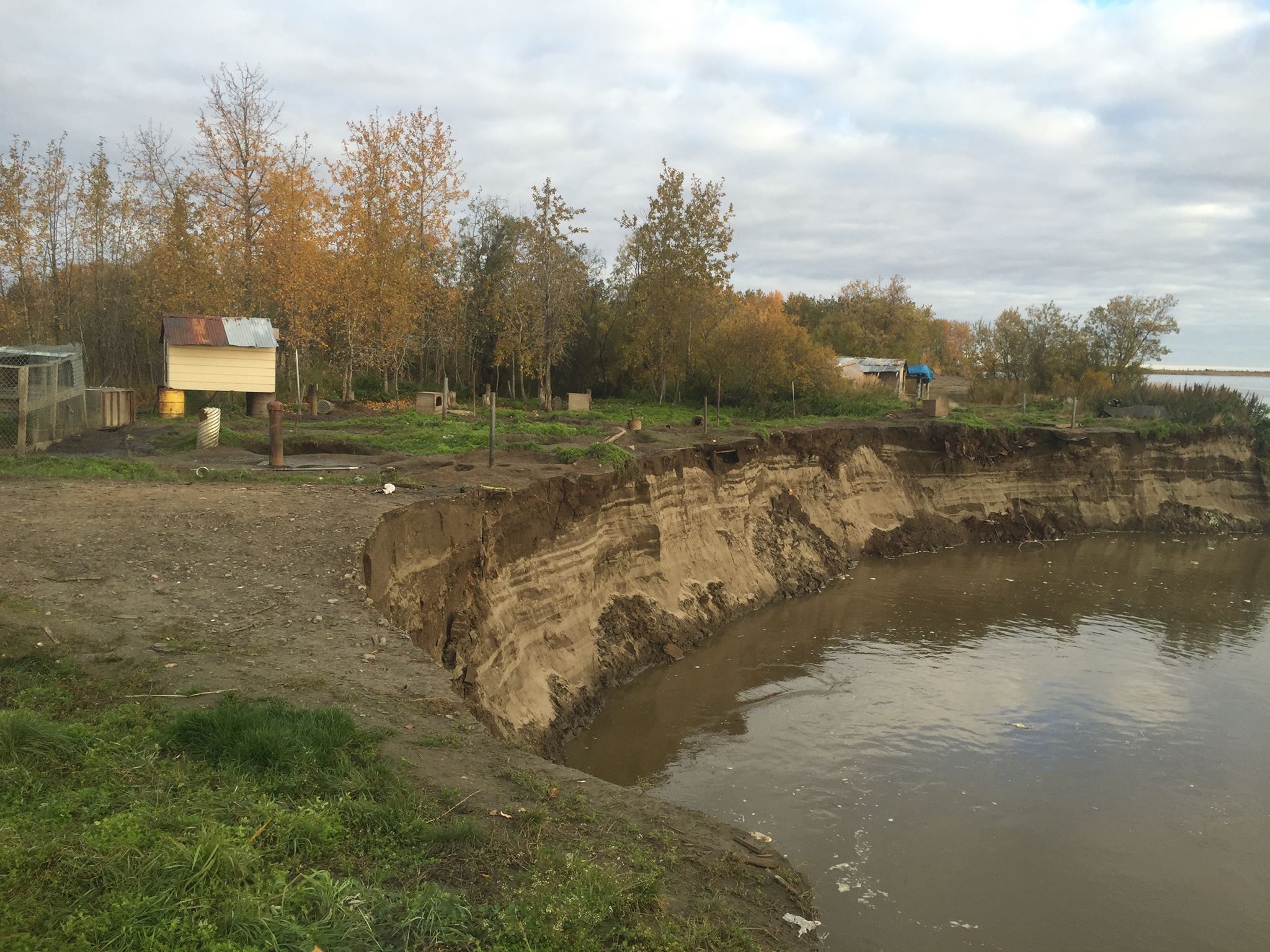
Just as it was getting dark Saturday evening, Akiak resident and dog musher Mike Williams Sr. stepped outside to see his kennel falling into the Kuskokwim River and seven of his 60 sled dogs being pulled along with it.
The dogs were hanging by their chains, their bodies dangling over the eroding banks.
“They were beginning to choke,” Williams says, “but they’re alive, they’re okay now. [We] got them just in time.”
A relative stepped outside to check on Williams’ 60 dogs when he realized something wasn’t right.
The lot was falling into the riverbank, and quickly.
“This is about the most I’ve seen in recent times in Akiak,” Williams said.
He was able to rescue and relocate all of his sled dogs, but lost a refrigerator that stored dog food. Over the next few hours he also lost about 50 feet of land.
“These are tough times for all of us, and hopefully a lot of erosion projects will be funded to help fix all of this stuff,” he says.
What Williams experienced is called mass erosion.
Erosions is common along the Kuskokwim, especially in an era of climate change. But in Akiak, erosion commonly occurs during breakup season when the river flows faster, not in late September.
Chris Maio, an Assistant Professor of Geology at the University of Alaska Fairbanks, studies coastal geography and says Saturday’s erosion is abnormal.
“I certainly think that is what I’d categorize as an extreme erosional event,” Maio said.
Maio says the event is a result of three elements: the river’s natural composition, warmer weather and high rainfall.
The sediment in communities along the Kuskokwim is composed primarily of silt, a fine gradient, and it’s held together by permafrost.
When the temperatures rise, the permafrost melts, weakening the riverbanks. When a heavy rain comes, it can tear the land away.
Williams says it had been raining a lot before the mass erosion, raising the river, but he says the weather Saturday night wasn’t particularly windy or intense.
In 2009, the U.S. Army Corps of Engineers conducted an erosion assessment of almost 200 Alaskan communities.
According to the assessment, Akiak is losing about an acre of land a year, and the village’s communications hub will be lost within 30 years to erosion.
Researchers concluded that potential damage could cost more than $18 million.
Akiak City Administrator Ivan Ivan says the city has developed a mitigation plan, and recently applied for a disaster relief grant through FEMA. If awarded, the grant will help relocate about nine homes that are close to the river.
Ivan says they’re still waiting to hear back.
